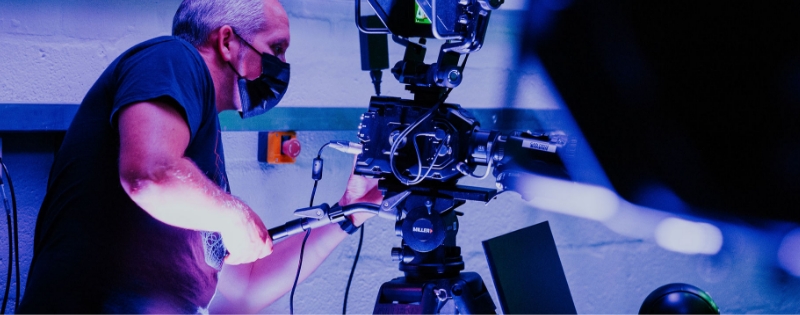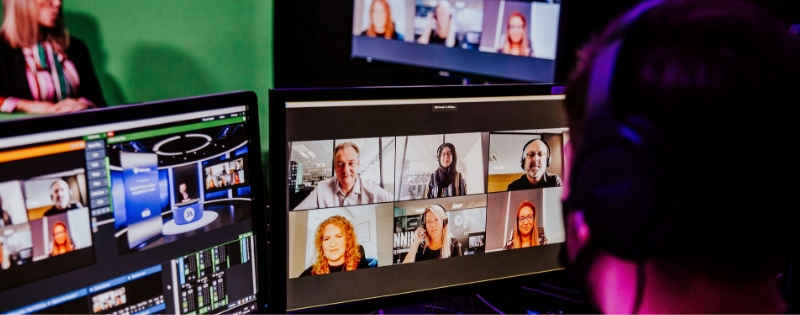Brands are paying more and more attention to consumers. If you were to listen in on a peer-to-peer conversation amongst brand executives (as my job enables me to do on the regular), it wouldn’t be long before you heard the term “customer-centric.” But there’s a growing chorus of voices calling for companies to put customers in second place. Here’s why.
The Link between CX and EX
During several recent GDS Virtual Roundtable events, featuring executives from across the globe and from a range of industries, business leaders have been connecting the dots between customer experience (CX) and employee experience (EX).
At a roundtable sponsored by Cresta, a company specializing in supporting contact center agents, panelists described how improving employee experience ultimately drives a better experience for consumers. From a leading telecommunications company to a multinational software giant, the executives on our panel agreed: Customer service agents want to help their customers. When they have the right support and the right tools to do that, not only are employees satisfied but query times and client satisfaction improves, as well.
Real-Time Information
A common theme revealed on this panel was the importance of real-time. As the attendee from a telco provider put it, contact center employees want short messages or snippets of information, right when they need it, to help their customers. Picture shouting a question across the cubicle to a senior-level colleague and using the response while the customer is still on the line. Or the equivalent of that, in a remote setting.
That sort of live communication is one of the most effective things the executive from Cresta sees best-in-class companies doing right now. Providing agents with real-time updates on promotions, or new products for instance, so they’re not constantly memorizing the latest details and offers.
“Live” Coaching
Panelists also spoke about trying to move toward real-time coaching. Providing contextual, ongoing feedback where desired behaviors are reinforced during a live customer conversation, instead of a rear-looking performance review. Even more useful, leaders on the roundtable agreed that metrics can be tied into the coaching, and managers can have more frequent, relevant career conversations with employees.
In today’s climate, where talent is scarce and retention is tough, it’s clear companies are paying attention to EX like never before.
In fact, according to research from Forrester, within two years, 78% of HR leaders believe employee experience will be one of the most important factors impacting firms’ ability to deliver on business objectives.
AI Making It Possible
So, how do we solve these types of real-time challenges? Artificial Intelligence. AI and chatbots are increasingly being used to enhance customers’ interactions with brands. Who hasn’t chatted with a bot to get an update on an order? Research shows chatbots are actually becoming a preferred channel for customer support. A recent industry survey revealed that more than 69% of respondents would often or always use a chatbot if they were confident the bot could resolve their issues more quickly.
It makes sense then, that the real-time nature of the technology is also improving internal, employee-facing systems. At a GDS Virtual Roundtable event sponsored by Yellow.ai, executives talked about the move to automate repetitive HR process, like hiring, onboarding, offboarding, performance reviews, and employee feedback with AI.
The HR executives on this panel, from industries such as healthcare, software and telecommunications, were nearly unanimous in their prioritization of redesigning employee onboarding processes. As one panelist shared, an employee shouldn’t have to spend Day One with the organization just filling out paperwork for payroll and access to equipment and facilities. Employees should be able to interact with smarter, faster, and more integrated systems. Especially in today’s hybrid working world where many employees are remote.
Employees First
When companies concentrate on EX, what it really comes down to is connection. A global talent acquisition executive on the panel shared what she has gathered from employees: They long to feel connected, to understand the impact of their role. The key to providing this to employees? Consistently and continuously enabling and empowering them to solve customer concerns and fix issues when they see them.
World-renowned restaurateur Danny Meyer, the man behind concepts like Union Square Cafe, Gramercy Tavern, and Shake Shack, is famous for his take on hospitality. He sums up the EX/CX connection beautifully.
“If you’re going to provide the most powerful, sustainably lasting hospitality experience,” Meyer has stated, “believe it or not, we’ve learned you have to put your customer second.”
He continues, “the best way to make the most customers happy, is to make sure the people who come to work at your organization are having a great experience coming to work.”
Want More Insight?
GDS Summits are tailored 3-day virtual event conferences that bring together business leaders and solution providers to accelerate sales cycles, industry conversations and outcomes. Regarding the CX Innovation Summit, 86% of Delegates said the overall experience of Digital Summit they attended was either Above Average or Excellent and 71% of Delegates said the Digital Summit provided them with actionable outcomes to support their current initiatives.
What do attendees say about how GDS has helped them achieve business outcomes? Click here!
Continue the debate at an upcoming GDS CX Innovation Summit, where we bring together senior marketing executives who are actively seeking to share, learn, engage, and find the best solutions.
















